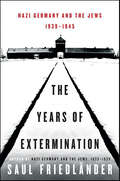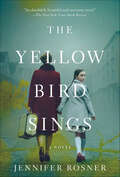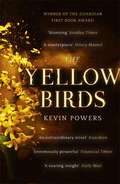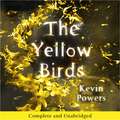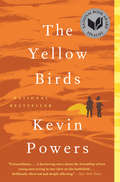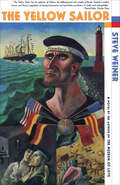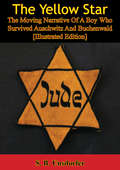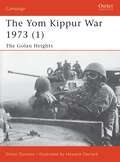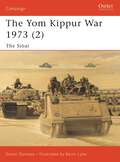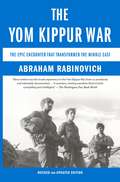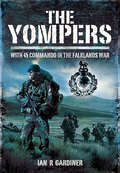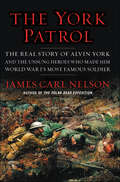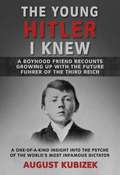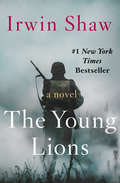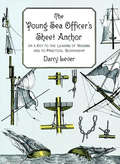- Table View
- List View
The Years Were Good
by Louis B. SeltzerLOUIS BENSON SELTZER was born September 19, 1897, in a single-story cottage back of a fire station on Cleveland’s near West Side—on the other side of the river and the other side of the tracks. The oldest of five children in a household always short of cash, he was hardly in knee britches before he was handling a paper route to help out the kitchen bank. His father was Charles Alden Seltzer, who was to write 49 books, many of which were later made into motion pictures. But when Louis Seltzer was seven years old his father had not yet sold his first story, and when he was thirteen he left school without finishing seventh grade in order to take a job as an office boy and cub reporter on The Leader. A year later he moved over to The Cleveland News, only to come back to The Leader where, in addition to his other duties, he wrote a column under the by-line of “Luee, The Offis Boy.” Once more he shifted to The Cleveland News, and after a short time there he was fired—and told he’d never make a newspaperman.This was early in 1915 and Louis B. Seltzer was not quite eighteen. He was already married to Marion Elizabeth Champlin, and his first child, Chester Ellsworth, was soon to be born. A daughter, Shirley Marion, was born in 1919. Within a year of joining The Press he was made City Editor, only to fire himself from that particular assignment in six months because he didn’t like the desk work. He chose to become a reporter again, specializing in the political beat.In 1921 he again became City Editor of The Press. In 1924 he was named Political Editor. In 1927 he was made Chief Editorial Writer. In March of 1928 he became Associate Editor. And on July 9, in the same year, he was elevated to the post of Editor of The Cleveland Press, a position he has filled ever since. In addition he has been since 1937 Editor-in-Chief of the Scripps-Howard Newspapers of Ohio.
The Years of Extermination: Nazi Germany and the Jews, 1939–1945
by Saul Friedländer"Establishes itself as the standard historical work on Nazi Germany’s mass murder of Europe’s Jews. . . . An account of unparalleled vividness and power that reads like a novel. . . . A masterpiece that will endure." — New York Times Book ReviewThe Years of Extermination, the completion of Saul Friedländer's major historical opus on Nazi Germany and the Jews, explores the convergence of the various aspects of the Holocaust, the most systematic and sustained of modern genocides.The enactment of the German extermination policies that resulted in the murder of six million European Jews depended upon many factors, including the cooperation of local authorities and police departments, and the passivity of the populations, primarily of their political and spiritual elites. Necessary also was the victims' willingness to submit, often with the hope of surviving long enough to escape the German vise.In this unparalleled work—based on a vast array of documents and an overwhelming choir of voices from diaries, letters, and memoirs—the history of the Holocaust has found its definitive representation.
The Years of the Wolf
by Craig CormickThis story begins with a murder. A German internee is found dead inside a civilian internment camp during World War One, and one young internee, Arno Friedrich, determines to find the killer. But the more he probes into the lives of his fellow internees the more he discovers that little within the old stone prison is as he had imagined. He finds that the Germanic facades and fantasies the men construct hide secrets within secrets. And a killer.
The Yellow Bird Sings: A Novel
by Jennifer RosnerNational Jewish Book Award Finalist "Rosner’s exquisite, heart-rending debut novel is proof that there’s always going to be room for another story about World War II....This is an absolutely beautiful and necessary novel, full of heartbreak but also hope, about the bond between mother and daughter, and the sacrifices made for love." —The New York TimesIn Poland, as World War II rages, a mother hides with her young daughter, a musical prodigy whose slightest sound may cost them their lives.As Nazi soldiers round up the Jews in their town, Róza and her 5-year-old daughter, Shira, flee, seeking shelter in a neighbor’s barn. Hidden in the hayloft day and night, Shira struggles to stay still and quiet, as music pulses through her and the farmyard outside beckons. To soothe her daughter and pass the time, Róza tells her a story about a girl in an enchanted garden:The girl is forbidden from making a sound, so the yellow bird sings. He sings whatever the girl composes in her head: high-pitched trills of piccolo; low-throated growls of contrabassoon. Music helps the flowers bloom. In this make-believe world, Róza can shield Shira from the horrors that surround them. But the day comes when their haven is no longer safe, and Róza must make an impossible choice: whether to keep Shira by her side or give her the chance to survive apart.Inspired by the true stories of Jewish children hidden during World War II, Jennifer Rosner’s debut is a breathtaking novel about the unbreakable bond between a mother and a daughter. Beautiful and riveting, The Yellow Bird Sings is a testament to the triumph of hope—a whispered story, a bird’s song—in even the darkest of times.
The Yellow Birds
by Kevin PowersAn unforgettable depiction of the psychological impact of war, by a young Iraq veteran and poet, THE YELLOW BIRDS is already being hailed as a modern classic. It is also a story of love, of great courage, and of extraordinary human survival. WINNER OF THE GUARDIAN FIRST BOOK AWARD NATIONAL BOOK AWARD FINALISTNEW YORK TIMES BESTSELLER and BOOK OF THE YEARA TLS, GUARDIAN, EVENING STANDARD and SUNDAY HERALD BOOK OF THE YEAREverywhere John looks, he sees Murph.He flinches when cars drive past. His fingers clasp around the rifle he hasn't held for months. Wide-eyed strangers praise him as a hero, but he can feel himself disappearing. Back home after a year in Iraq, memories swarm around him: bodies burning in the crisp morning air. Sunlight falling through branches; bullets kicking up dust; ripples on a pond wavering like plucked strings. The promise he made, to a young man's mother, that her son would be brought home safely.Written with profound emotional insight, especially into the effects of a hidden war on families at home, THE YELLOW BIRDS is one of the most haunting, true and powerful novels of our time.
The Yellow Birds: A Novel
by Kevin PowersWINNER OF THE GUARDIAN FIRST BOOK AWARD 2012WINNER OF THE HEMINGWAY/PEN AWARD 2012NATIONAL BOOK AWARD FINALISTAN AMAZON EDITOR'S PICK: BEST BOOKS OF 2012 A NEW YORK TIMES TOP TEN BOOK OF THE YEARA TIMES BOOK OF THE YEARAN INDEPENDENT BOOK OF THE YEAR A TLS BOOK OF THE YEARAN EVENING STANDARD BOOK OF THE YEARA SUNDAY EXPRESS BOOK OF THE YEARA GUARDIAN BOOK OF THE YEAR A NEW YORK TIMES BOOK OF THE YEARA SUNDAY HERALD BOOK OF THE YEARAN IRISH TIMES BOOK OF THE YEAR An unforgettable depiction of the psychological impact of war, by a young Iraq veteran and poet, THE YELLOW BIRDS is already being hailed as a modern classic.Everywhere John looks, he sees Murph.He flinches when cars drive past. His fingers clasp around the rifle he hasn't held for months. Wide-eyed strangers praise him as a hero, but he can feel himself disappearing. Back home after a year in Iraq, memories swarm around him: bodies burning in the crisp morning air. Sunlight falling through branches; bullets kicking up dust; ripples on a pond wavering like plucked strings. The promise he made, to a young man's mother, that her son would be brought home safely.With THE YELLOW BIRDS, poet and veteran Kevin Powers has composed an unforgettable account of friendship and loss. It vividly captures the desperation and brutality of war, and its terrible after-effects. But it is also a story of love, of great courage, and of extraordinary human survival. Written with profound emotional insight, especially into the effects of a hidden war on families at home, THE YELLOW BIRDS is one of the most haunting, true and powerful novels of our time.'THE YELLOW BIRDS is the All Quiet on the Western Front of America's Arab Wars.'(Tom Wolfe, author of The Bonfire of the Vanities )'Kevin Powers has conjured a poetic and devastating account of war's effect on the individual.'(Damian Lewis, star of Homeland and Band of Brothers )'Inexplicably beautiful'.(Ann Patchett, Orange Prize-winning author of Bel Canto and State of Wonder)(P)2012 Hachette Audio
The Yellow Birds: A Novel (Litterature & Documents Ser.)
by Kevin Powers<P>A novel written by a veteran of the war in Iraq, The Yellow Birds is the harrowing story of two young soldiers trying to stay alive. <P>"The war tried to kill us in the spring." <P> So begins this powerful account of friendship and loss. In Al Tafar, Iraq, twenty-one-year old Private Bartle and eighteen-year-old Private Murphy cling to life as their platoon launches a bloody battle for the city. Bound together since basic training when Bartle makes a promise to bring Murphy safely home, the two have been dropped into a war neither is prepared for. <P>In the endless days that follow, the two young soldiers do everything to protect each other from the forces that press in on every side: the insurgents, physical fatigue, and the mental stress that comes from constant danger. <P> As reality begins to blur into a hazy nightmare, Murphy becomes increasingly unmoored from the world around him and Bartle takes actions he could never have imagined. <P>With profound emotional insight, especially into the effects of a hidden war on mothers and families at home, The Yellow Birds is a groundbreaking novel that is destined to become a classic.
The Yellow Sailor: A Novel
by Steve WeinerIn this surreal & dramatic novel set at the dawn of World War I, a German merchant ship wrecks, and its crew of five drift their separate ways. This extraordinary novel, moodily operatic in tone and by turns hallucinatory and brilliantly detailed, follows the trajectories of four sailors and the owner of a German merchant ship, Yellow Sailor, which sets sail from Bremen in 1914. After the ship wrecks in shallow water, the men drift their separate ways, with each man&’s journey across a desolate wartime European landscape becoming an exploration of the failure of love, sex, religion, and friendship . . . Julius Bernai, owner of the ship and frankly homosexual, checks into an institute for nervous disorders and falls in love with the doctor&’s fiancée. Nicholas Bremml drifts: from the beds of numerous prostitutes to an oil tanker called Erwartung— Expectation—to Prague&’s Jewish market, where he sells magic spells. Brothers Karl and Alois are equally rudderless, and Jacek, the electrician, goes to work in the mines, where his love advice to a fourteen-year-old Polish boy precipitates a macabre murder . . .Praise for The Yellow Sailor &“The Yellow Sailor has the calamity of Voltaire, the disillusionment and venality of Brecht, Kasinski&’s random horror, and Grosz&’s population of leering businessmen and hard-bitten prostitutes. . . . It&’s bold and unforgettable.&” —David Finkle, Trenton Times
The Yellow Star: The Legend of King Christian X of Denmark
by Carmen Agra Deedy Henri SorensenWithout the yellow star to point them out, the Jews looked like any other Danes. For centuries, the Star of David was a symbol of Jewish pride. But during World War II, Nazis used the star to segregate and terrorize the Jewish people. Except in Denmark. When Nazi soldiers occupied his country, King Christian X of Denmark committed himself to keeping all Danes safe from harm. The bravery of the Danes and their king during that dangerous time has inspired many legends. The most enduring is the legend of the yellow star, which symbolizes the loyalty and fearless spirit of the king and his people. Award-winning author and storyteller Carmen Deedy has poignantly recreated this legend, which is accompanied by Danish illustrator Henri Sørensen's arresting full-color portraits. The result is a powerful and dignified story of heroic justice, a story for all people and all times.
The Yellow Star: The Legend of King Christian X of Denmark
by Carmen Agra DeedyWithout the yellow star to point them out, the Jews looked like any other Danes. In 1940, Nazis occupied Denmark and King Christian X, beloved amongst his people, had to find some way to resist their overwhelming power. When the order went out that all Jews must wear a yellow star on their clothes, the king had an idea that might just work. But it would take the faith and commitment of all Danes.In this retelling of a World War II legend, New York Times best-selling author Carmen Agra Deedy poignantly remind us of the power of a good, wise leader. Paired with Henri Sørensen's arresting full-color portraits, this is a powerful and dignified story of heroic justice.
The Yellow Star: The Moving Narrative Of A Boy Who Survived Auschwitz And Buchenwald [Illustrated Edition]
by S. B. UnsdorferIncludes 204 photos, plans and maps illustrating The Holocaust"Simcha Bunem Unsdorfer was the son of a well-known rabbi in Bratislava, the mother community for the Jewish population of Czechoslovakia. Because of the importance of his father's position, the family was permitted to remain in the city after the German occupation during World War II. Eventually, however, the family was deported to the infamous camps of Auschwitz where the Unsdorfers were separated and the parents killed. Their nineteen-year-old son Simcha was transferred from Auschwitz to work in an airplane factory in the Buchenwald camp. Throughout his long and terrible ordeal, he and his fellow prisoners were mercilessly molested by the S.S. men, but they held on to life tenaciously, their faith in God and His Torah never wavering. When the war finally ended, workers and prisoners were freed and permitted to go home. Home! Home! cried the Czechs, dancing and kissing in mad jubilation. We, the Jews, sank down on the floor again...Home Home What a travesty. Home a place that no longer was, and never would be again. Free...What were we freed for? Only to mourn and lament for the rest of our days over the greatest tragedy that had ever befallen our people in our long and trying history. Simcha Bunem Unsdorfer has written a deeply moving account of his experiences as a devout Jew in the concentration camps and factories of the Nazi Reich. The Yellow Star is a painful story, but a heroic one, a book which cogently describes the Divine strength inherent in the Jewish soul."-Print ed.
The Yellowlegs: The Story of the United States Cavalry
by Richard WormserThe colorful, action-packed early history of the horse-riding branch of the U.S. Army. In this comprehensive and lively account, Richard Wormser—who was himself an enthusiastic horseman—narrates the major events and characters of the U.S. Cavalry&’s formative, and, some might say fruitful, years. From the American Revolution and the exploits of men such as Henry &“Light-Horse Harry&” Lee III and Francis Marion, the first of the guerrillas, the author follows on with Stephen Kearny, the &“Father of the Cavalry&” whose dragoons went west to California on mules, and his nephew Philip, who organized the famed Gray Horse Troop of the Mexican War. Other famous names featured include Jonathan &“Stonewall&” Jackson; George Crook, who admired the Indians it was his duty to hunt down; and George Armstrong Custer. A U.S. Army officer and cavalry commander who served with distinction in the American Civil War, Custer is most remembered for leading more than 200 of his men to their deaths in the Battle of the Little Bighorn in June 1876. Also known as &“Custer&’s Last Stand&’, Bighorn was part of the Black Hills War against a confederation of Plains Indians, including the Cheyenne and Dakota Sioux. It remains one of the most controversial battles in American history. Roosevelt&’s Roughriders and Black Jack Pershing, who led his troops in an automobile, complete the narrative—one which is undoubtedly a saga of daring raids, of epic marches, and of grueling battles. As the author reveals, the story of the U.S. Cavalry is also the story of the birth and growth of America itself.
The Yom Kippur War 1973
by Howard Gerrard Simon DunstanOsprey's first title in the study of the Yom Kippur War (1973). At 1345hrs on 6 October 1973, Israeli spotters in the observation post atop Mount Hermon saw Syrian gunners below them removing the camouflage nets from their guns. Ten minutes later shells began to rain down on Israeli positions all along the Golan Heights - The Yom Kippur War had begun. The shock Syrian attack caught the Israelis by surprise and by the afternoon of 7 October a Syrian brigade was less than 10km from the Sea of Galilee. Simon Dunstan describes in detail how amid desperate and bitter fighting the Israeli forces managed to turn the tide on the Golan Heights.
The Yom Kippur War 1973
by Kevin Lyles Simon DunstanOsprey's second title in the study of the Yom Kippur War (1973). Israel's victory in the 1967 'Six Day War' sowed the seeds of the 1973 Yom Kippur War. At 1400hrs on 6 October 1973 the Egyptian army launched an assault crossing of the Suez Canal. The carefully co-ordinated attack achieved complete tactical surprise. The sand embankments of the Israeli Bar-Lev Line were breached and an Israeli counterattack thrown back with heavy losses. In the second of his two-volume analysis of the Yom Kippur War, Simon Dunstan details the fighting in the Sinai, culminating in Operation Gazelle, the Israeli counterattack across the Suez Canal. Although defeated militarily Egypt did ultimately succeed in forcing the Israelis back to the negotiating table.
The Yom Kippur War: And the Airlift Strike That Saved Israel
by Walter J. BoyneWalter J. Boyne's The Yom Kippur War is a spellbinding chronicle of the international chess game that was played out in October 1973. It is a story of diplomacy and military might that accounts for many of the dilemmas faced in the present-day Middle East. It's usually called the Yom Kippur War. Or sometimes the October War. The players that surround it are familiar: Sadat and Mubarak, Meir and Sharon, Nixon and Kissinger, Brezhnev and Dobyrnin. It was a war that brought Arab and Jew into vicious conflict. A war in which Israel almost unleashed her nuclear arsenal and set two superpowers on a treacherous course of nuclear escalation. And a war that eventually brought peace. But a peace fraught with delicate tensions, disputed borders, and a legacy of further bloodshed. This is a war that Israel never thought was possible. Surprised by the fury and excellent execution of the Arab onslaught, and perhaps more than a little complacent, Israel suddenly found itself on the point of losing a war because of a lack of ammunition, planes and tanks. The United States, after much vacillation, finally elected to help Israel, beginning a tremendous airlift (code name: Operation Nickel Grass) which incurred the wrath of the Arab states, and their sponsor, the Soviet Union. Fortunately, the airlift came just in time for Israeli ground forces to stabilize their positions and eventually turn the tide in the Sinai and Golan Heights. And it was all made possible by an operation that dwarfed the Berlin Airlift and the Soviets' simultaneous efforts in Egypt and Syria.The Yom Kippur War is bound to become the definitive history of a war that quite literally approached Armageddon.
The Yom Kippur War: The Epic Encounter That Transformed the Middle East
by Abraham RabinovichA US journalist now living in Jerusalem who has written several books on Israel chronicles the 1973 war that dramatically altered the regional map and politics. Based on interviews with Israeli Army commanders and other sources, this account also discusses Arab perspectives and the war's legacy, and includes photos and maps. Annotation ©2004 Book News, Inc. , Portland, OR (booknews. com)
The Yompers: With 45 Commando in the Falklands War
by Ian GardinerCalled to action on 2 April 1982, the men of 45 Commando Royal Marines assembled from around the world to sail 8,000 miles to recover the Falkland Islands from Argentine invasion. Lacking helicopters and short of food, they yomped in appalling weather carrying overloaded rucksacks, across the roughest terrain. Yet for a month in mid-winter, they remained a cohesive fighting-fit body of men. They then fought and won the highly successful and fierce night battle for Two Sisters, a 1,000 foot high mountain which was the key to the defensive positions around Stanley.This is a first hand story of that epic feat, but it is much more than that. The first to be written by a company commander in the Falklands War, the book gives a compelling, vivid description of the yomp and infantry fighting, and it also offers penetrating insights into the realities of war at higher levels. It is a unique combination of descriptive writing about front-line fighting and wider reflections on the Falklands War, and conflict in general.Gritty and moving; sophisticated, reflective and funny, this book offers an abundance of timeless truths about war.Postscript: Yomping was the word used by the Commandos for carrying heavy loads on long marches. It caught the publics imagination during this short but bitter campaign and epitomized the grim determination and professionalism of our troops.
The York Patrol: The Real Story of Alvin York and the Unsung Heroes Who Made Him World War I's Most Famous Soldier
by James Carl Nelson"Exceptional military history worthy of its heroic subject." —Matthew J. DavenportIn the vein of Band of Brothers and American Sniper, a riveting history of Alvin York, the World War I legend who killed two dozen Germans and captured more than 100, detailing York's heroics yet also restoring the unsung heroes of his patrol to their rightful place in history—from renowned World War I historian James Carl Nelson.October 8, 1918 was a banner day for heroes of the American Expeditionary Force. Thirteen men performed heroic deeds that would earn them Medals of Honor. Of this group, one man emerged as the single greatest American hero of the Great War: Alvin Cullum York. A poor young farmer from Tennessee, Sergeant York was said to have single-handedly killed two dozen Germans and captured another 132 of the enemy plus thirty-five machine guns before noon on that fateful Day of Valor. York would become an American legend, celebrated in magazines, books, and a blockbuster biopic starring Gary Cooper. The film, Sergeant York, told of a hell-raiser from backwoods Tennessee who had a come-to-Jesus moment, then wrestled with his newfound Christian convictions to become one of the greatest heroes the U.S. Army had ever known. It was a great story—but not the whole story.In this absorbing history, James Carl Nelson unspools, for the first time, the complete story of Alvin York and the events that occurred in the Argonne Forest on that day. Nelson gives voice, in particular, to the sixteen “others” who fought beside York. Hailing from big cities and small towns across the U.S. as well as several foreign countries, these soldiers included a patrician Connecticut farmer whose lineage could be traced back to the American Revolution, a poor runaway from Massachusetts who joined the Army under a false name, and a Polish immigrant who enlisted in hopes of expediting his citizenship. The York Patrol shines a long overdue spotlight on these men and York, and pays homage to their bravery and sacrifice. Illustrated with 25 black-and-white images, The York Patrol is a rousing tale of courage, tragedy, and heroism.
The Young Hitler I Knew: A Boyhood Friend Recounts Growing Up with the Future Fuhrer of the Third Reich
by Mr. August KubizekAugust Kubizek met Adolf Hitler in 1904 while they competed for standing room at the opera. Kubizek describes a reticent young man, painfully shy, yet capable of bursting into hysterical fits of anger if anyone disagreed with him. But they grew close, often talking for hours on end. In 1908, they began sharing an apartment in Vienna. After being rejected twice from art school, Hitler found himself sinking into an unkind world of &“constant unappeasable hunger.&” Kubizek did not meet his friend again until he congratulated him on becoming Chancellor of Germany. The Young Hitler I Knew tells the story of an extraordinary friendship, and gives fascinating insight into Hitler&’s character during these formative years.
The Young Lions
by Irwin ShawStanding alongside Norman Mailer's The Naked and the Dead and James Jones's From Here to Eternity, The Young Lions is one of the most powerful American novels to tackle the Second World War. Ambitious in its scope and robust in its prose, Irwin Shaw's work is also deeply humanistic, presenting the reality of war as seen through the eyes of ordinary soldiers on both sides. The story follows the individual dramas — and ultimately intertwined destinies — of Christian Diestl, a Nazi sergeant; Noah Ackerman, a Jewish American infantryman; and Michael Whitacre, an idealistic urbanite from the New York theatrical world. Diestl first appears as a dashing ski instructor in Austria, mouthing his loyalty to Nazi ideals. As the war progresses, Diestl's character continues to erode as he descends into savagery. Ackerman must endure domestic anti-Semitism and beatings in boot camp before proving himself in the European theater. Eventually, as part of the liberating army, he comes face-to-face with the unimaginable horrors of the death camps. Whitacre, trading cocktail parties for Molotov cocktails, confronts the barbarism of war, and in fighting simply to survive, finds his own capacity for heroism. Shaw's sweeping narrative is at once vivid, exciting, and brutally realistic as well as poignant in its portrayal of the moral devastation and institutional insanity of war. Penned by a master storyteller at the height of his craft, The Young Lions stands the test of time as a classic novel of war and the human experience.
The Young Lions: A Novel
by Irwin ShawOne of the great World War II novels, this New York Times–bestselling &“masterpiece&” captures the experiences of three very different soldiers (The Boston Globe). Standing alongside Norman Mailer&’s The Naked and the Dead and James Jones&’s From Here to Eternity, The Young Lions is one of the most powerful American novels to tackle the Second World War. Ambitious in its scope and robust in its prose, Irwin Shaw&’s work is also deeply humanistic, presenting the reality of war as seen through the eyes of ordinary soldiers on both sides. The story follows the individual dramas—and ultimately intertwined destinies—of Christian Diestl, a Nazi sergeant; Noah Ackerman, a Jewish American infantryman; and Michael Whitacre, an idealistic urbanite from the New York theatrical world. Diestl first appears as a dashing ski instructor in Austria, mouthing his loyalty to Nazi ideals. As the war progresses, Diestl&’s character continues to erode as he descends into savagery. Ackerman must endure domestic anti-Semitism and beatings in boot camp before proving himself in the European theater. Eventually, as part of the liberating army, he comes face-to-face with the unimaginable horrors of the death camps. Whitacre, trading cocktail parties for Molotov cocktails, confronts the barbarism of war, and in fighting simply to survive, finds his own capacity for heroism. Shaw&’s sweeping narrative is at once vivid, exciting, and brutally realistic as well as poignant in its portrayal of the moral devastation and institutional insanity of war. Penned by a master storyteller at the height of his craft, The Young Lions stands the test of time as a classic novel of war and the human experience. This ebook features an illustrated biography of Irwin Shaw including rare images and never-before-seen documents from the author&’s estate.
The Young Lions: A Novel (Phoenix Fiction Ser.)
by Irwin ShawOne of the great World War II novels, this New York Times–bestselling &“masterpiece&” captures the experiences of three very different soldiers (The Boston Globe). Standing alongside Norman Mailer&’s The Naked and the Dead and James Jones&’s From Here to Eternity, The Young Lions is one of the most powerful American novels to tackle the Second World War. Ambitious in its scope and robust in its prose, Irwin Shaw&’s work is also deeply humanistic, presenting the reality of war as seen through the eyes of ordinary soldiers on both sides. The story follows the individual dramas—and ultimately intertwined destinies—of Christian Diestl, a Nazi sergeant; Noah Ackerman, a Jewish American infantryman; and Michael Whitacre, an idealistic urbanite from the New York theatrical world. Diestl first appears as a dashing ski instructor in Austria, mouthing his loyalty to Nazi ideals. As the war progresses, Diestl&’s character continues to erode as he descends into savagery. Ackerman must endure domestic anti-Semitism and beatings in boot camp before proving himself in the European theater. Eventually, as part of the liberating army, he comes face-to-face with the unimaginable horrors of the death camps. Whitacre, trading cocktail parties for Molotov cocktails, confronts the barbarism of war, and in fighting simply to survive, finds his own capacity for heroism. Shaw&’s sweeping narrative is at once vivid, exciting, and brutally realistic as well as poignant in its portrayal of the moral devastation and institutional insanity of war. Penned by a master storyteller at the height of his craft, The Young Lions stands the test of time as a classic novel of war and the human experience. This ebook features an illustrated biography of Irwin Shaw including rare images and never-before-seen documents from the author&’s estate.
The Young Sea Officer's Sheet Anchor: Or a Key to the Leading of Rigging and to Practical Seamanship
by Darcy LeverWidely used among young 19th-century officers in the Royal Navy and East India Company, this now-rare volume offers clear definitions and copious illustrations of the principles of rigging and other aspects of seamanship -- tacking, use of a compass, splicing ropes, making sails, and much more. A must for ship fanciers and naval historians.
The Young T. E. Lawrence
by Anthony SattinAn intimate biography of the years that turned T. E. Lawrence into Lawrence of Arabia. Lawrence of Arabia's heroism during the Arab revolt and his disgust at the subsequent betrayal of the Arabs in the postwar negotiations have become the stuff of legend. But T. E. Lawrence's adventures in the Levant began long before the outbreak of war. This intimate biography is the first to focus on Lawrence in his twenties, the untold story of the awkward archaeologist from Oxford who, on first visiting "The East," fell in love with Arab culture and found his life's mission. Few people realize that Lawrence's classic autobiography, Seven Pillars of Wisdom, was not the first book to carry that iconic title. Lawrence himself burned his original draft. Anthony Sattin here uncovers the story Lawrence wanted to conceal: the truth of his birth, his tortuous relationship with a dominant mother, his deep affection for an Arab boy, and the personal reasons that drove him from student to spy. Drawing on surviving letters, diaries, and accounts from close confidantes, Sattin brings a biographer's eye for detail and a travel writer's verve to Lawrence's extraordinary journeys through the region with which his name is forever connected. In a masterful parallel narrative, The Young T. E. Lawrence charts the maturation of the man and the incipient countries he treasured, both coming of age at a time when the world's foundations were coming undone.
The Yugoslav Wars
by Nigel Thomas Darko Pavlovic K. MikulanOsprey's examination of Bosnia, Kosovo and Macedonia's involvement in the Yugoslav Wars (1991-1995), as well as their involvement in the conflicts of the years that followed. Following the death of the Yugoslavian strongman President Tito in 1980, the several semi-autonomous republics and provinces that he had welded into a nation in 1945 moved inexorably towards separation. As the world watched a series of wars ripped through this modern European state. In this second of two volumes, experts on the Balkan region give an unprecedented, clear and concise explanation of the armies of the the Bosnian Civil War 1992-5 as well as the conflicts in Kosovo and Macedonia. This includes the regular and militia forces which fought in these campaigns and which ultimately resulted in the UN/NATO policing of the region that continues to this day. The book is illustrated with rare photos and an extraordinary range of colour uniform plates.

